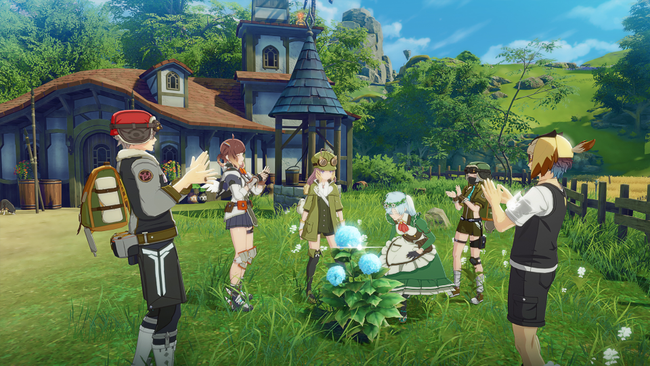
Blue Protocol: Star Resonance is a pleasantly repetitive experience that leaves no lasting impression
I am the first to acknowledge that I am not much of a gacha gamer, and I have opted out of most free-to-play games. Despite this, I was admittedly intrigued by Blue Protocol’s announcement. With trailers promising vibrant cities and lush environs, this anime-style online RPG with real-time combat seemed like a no-brainer. Having originally partnered with Amazon for a Western release, Blue Protocol seemed too big to fail. Yet that’s precisely what it did.
While the Japanese release came and went, the Western version was first delayed and then later quietly canceled. Not long thereafter, Bandai Namco shut the game down altogether worldwide. Blue Protocol had become another live-service outing that never quite found its footing before having the rug pulled out from underneath it.
Then came an offshoot-turned-reboot of sorts with Blue Protocol: Star Resonance, offering cross-play across PC and mobile, new systems, and that same action-anime vibe. Still nursing that curiosity from the original game, I wanted to know if Star Resonance could fill the gaps in my own imagination about what Blue Protocol proper would have been like. That aspect could have informed my experience with this game, the what-ifs of Protocol looming large over the what-is of Star Resonance.

At first, I was struck by just how nice this game looks. The graphics aren’t eye-popping or revolutionary, but they are still pleasant. Characters are well-drawn, the open zones are bright and clean, and everything has a hint of whimsy. The art style helps make the world feel cohesive rather than a spate of disparate zones strung together. NPCs are expressive, and the environments have a charm that makes it easy to continue playing. The game looks great on both my PC and my iPhone.
The sound design also wields this easy breezy attitude. Tracks are infrequently bombastic or emotional, but instead warm and laid-back. We’re talking gentle strings, ambient flutes, and the occasional grand melody that makes meandering through the open zones feel enjoyable. The arrangement doesn’t demand your attention or distract; instead, it helps the world feel comfortable to inhabit. In that sense, the sound design was gentle and relaxing, like a warm bath.
Oddly enough, I found myself enjoying Star Resonance more on my phone than on my PC. Usually, it’s the other way around — I like my Switches and Steam Decks docked, thank you. Here, the game’s breezy pace and low-impact structure felt perfectly suited for my phone’s screen. On PC, it feels a bit sparse and hollow; on my phone, it was the kind of game I could dip into for 15 minutes between tasks. In handheld form, the game’s shallowness actually works in its favor. It’s also where Star Resonance begins to falter. While there’s a pleasantness to the proceedings, there’s also a lack of friction that makes me feel as if I am not so much playing a game, but almost watching a game play itself.

In the hours I spent playing, I never felt tension or challenge. Combat looks active on the surface, replete with dodging, striking, and casting. Yet, too often it feels a bit floaty or disconnected. Enemies don’t hit hard enough, while I can press a single button and the computer will optimize combos using the skills I have equipped. I seldom felt any real sense of danger while playing or felt the urge towards mastery of any mechanics. The game keeps you busy but rarely engaged - unless of course, you are browsing the inordinate number of menus wanting to lull you into an in-app purchase.
Worse still, so much of my playtime was spent running: jogging from one quest marker to another, talking to NPCs who exposition-dump stilted lines that feel machine-translated. The dialogue isn’t broken, exactly, but it lacks any human rhythm. There is no story-driven momentum here because it all feels like busywork.
I’d sprint across a vast, empty plain just to click through an unintelligible conversation, accept a fetch quest, and jog back. Rinse, repeat. After a few hours, I stopped feeling like an adventurer and started feeling like I was working for an anime FedEx. Traversal, too, feels slow and uneventful. You can jump and climb to an extent, but the world doesn’t invite much curiosity. There are no surprises, no hidden corners that feel rewarding to find. It’s an open world that’s big for the sake of being big.

The gameplay loop becomes strangely hypnotic: run, talk, auto-attack, collect, upgrade, repeat. So much of the game is pleasant, verging on soothing, but it doesn’t stimulate. You can lose an hour in it without realizing, but when you put the phone down, there’s no lasting impression.
There’s an undeniable sense that Star Resonance is trying to capture the same lightning that struck for Genshin Impact and Honkai: Star Rail. The influence is everywhere, and the game wears these inspirations on its sleeve. But imitation can only go so far. Star Resonance feels like a photocopy missing half the ink. You’re always aware that you’re playing a game that wants to be something else.
Then there are the very many currencies. By the time you finish the tutorial, you’re juggling half a dozen different kinds of tokens, gems, and vouchers. Every activity yields something, but it’s rarely clear what those somethings are for. They all exist to feed into one another, a maze of invented economies designed to keep you invested and your PayPal account linked.

It’s hard to feel wonder when every other interaction reminds you of the in-app store. It’s hard to feel awe when progress is gated behind randomized systems and premium passes. The prettiest parts of Star Resonance are shadowed by the reminder that it’s a free-to-play machine first, an adventure second. And despite all that, I didn’t hate it. Star Resonance is a perfectly fine way to pass the time. It’s not compelling, but it’s not offensive either.
It’s a game I can (and did) play while watching something on TV or waiting for the laundry to finish drying. But as much as I wanted to lose myself in this revived version of Blue Protocol, I never found a reason to stay, especially as the seams of the paywall became more evident the further I played.
Blue Protocol Star Resonance is pretty and pleasant enough. But there’s no pulse underneath the shine: no friction, no sense of discovery, no moment where it all comes together. Just quiet repetition, pleasant enough to occupy your fingers or wallet, at least until the laundry buzzer goes off.